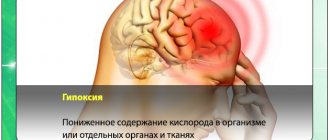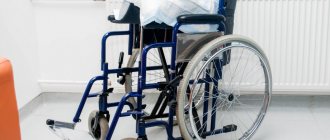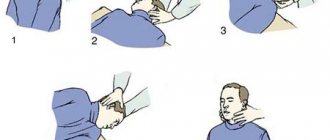Bruise is one of the most common types of injuries. With such damage, soft tissues suffer, but the integrity of the skin is not compromised. Such injuries often occur when struck with a blunt object, falls from a height onto a flat surface and can be combined with fractures, dislocations, scratches, and abrasions.
In addition to bruises of individual parts of the body, there are also bruises of internal organs.
As a rule, special treatment for bruises is not required. However, if you have pain for a long time after the injury, for example, a sore elbow or back pain, you should consult a doctor.
1
Treatment of bruises and hematomas
2 Treatment of bruises and hematomas
3 Treatment of bruises and hematomas
Degrees of bruises
Bruises can be single or multiple. Depending on the severity, the following degrees of damage are distinguished:
1st degree - mild bruises, accompanied by the appearance of small abrasions and wounds. Recovery occurs on its own within 3-4 days.
2nd degree - moderate bruises, characterized by the appearance of edema and hematomas. The person may feel sharp pain. In this case, special treatment for bruises is not provided. As a rule, applying a pressure bandage is sufficient. In case of blood formations under the skin, you should consult a doctor.
Grade 3 - damage to muscles and tendons, likelihood of dislocation. Such injuries can be dangerous if there is injury to the knees, head, or tailbone. An examination by a specialist is required to determine further treatment.
Grade 4 bruises can lead to disruption of the functioning of all human systems and organs.
The doctor determines the type of treatment and the need for surgical intervention.
The use of folk remedies
Competent first aid for a bruise, provided in a timely manner, significantly alleviates the condition of the victim, speeds up the healing process, and reduces the risk of possible complications.
In case of a bruise, it is advisable to apply cold to the injured area, for example a bag of frozen vegetables from the freezer, wrapped in a clean cloth. Ice can be kept for up to 40 minutes, preventing hypothermia, then take a break for 20 minutes. Repeat several times over 4-5 hours. This event helps relieve swelling and prevents the inflammatory process from developing. If the victim has severe pain, you can give him a painkiller.
It is not recommended to resort to folk remedies such as raw potatoes, oil dressing and others. If the bruise is accompanied by abrasions and scratches, which is often found in children, then in this case there is a high probability of infection.
has developed special products that can be used as first aid for bruises.
First, you should treat your hands with the antiseptic “Sterillum”. After this, you need to clean the area around the abrasion or the bruise. For a small abrasion, you can apply a bandage with Branolind N Peruvian balm and leave it in place for up to three days without dressing.
For better fixation of the bandage, use the Peha-Haft self-fixing bandage. It is securely attached by simply pressing one layer to another, does not stick to hair or skin, is economical (1.5–2 turns are enough for reliable fastening), and is available in different colors.
For bruises and abrasions, you can use Cosmopor Antibacterial adhesive bandages. The soft pad absorbs discharge from the abrasion well, and the silver-containing layer reliably protects the bruise site from infection. Cosmos Kids patches with different designs are produced for children.
Special patches from the Omni series have been developed for people with sensitive skin. Their adhesive surface is made of rubber glue, and the patch itself is made of non-woven hypoallergenic material or rayon.
In case of a bruise with a sprain, use a Putterbint cotton compression bandage to improve blood circulation and relieve swelling.
Symptoms of bruises
Bruises are accompanied by the appearance of the following clinical signs:
- redness, swelling, or swelling;
- hemorrhage (hematoma) or bruise (appears at the site of redness, the area of appearance is subcutaneous fatty tissue, intermuscular and subfascial space);
- severe or aching pain (the intensity of the pain depends on the location, force of the blow and the shape of the traumatic object).
You should pay attention to prolonged pain; it may indicate a fracture, bleeding in internal organs, or ligament ruptures.
1 Treatment of bruises and hematomas
2 Treatment of bruises and hematomas
3 Treatment of bruises and hematomas
Why is a hematoma dangerous?
A hematoma is a limited accumulation of blood in a damaged organ, tissue or muscle that appears as a result of rupture of blood vessels. Occurs as a result of a blow, bruise, as a result of vascular disease or abuse of certain medications.
Hemorrhage can be either small or extensive, leading to compression of internal organs. In some people, bruises on the skin may appear even with a light touch. For others, they occur quite rarely, but a strong blow can lead to significant internal bleeding.
Extensive hematomas can lead to various complications. Often, hemorrhages begin to compress various nerves or large vessels. In such cases, treatment of hematomas must be carried out in a medical facility.
Types of hematomas
Depending on the location, the following types of hematomas are distinguished:
- intramuscular hematoma;
- subcutaneous;
- subserous;
- cerebral hematoma.
Intramuscular and subcutaneous hematomas have the same symptoms and, most often, do not pose a health hazard. Usually such formations resolve safely. But sometimes they persist for a long time, interfering with the normal functioning of nearby organs.
Subserous hematoma is a hemorrhage localized in the chest or abdominal cavity. In this case, qualified medical care and surgical treatment of the hematoma are necessary.
Brain hematoma is one of the most dangerous. The accumulation of blood in the cranial cavity can lead to compression of the brain, as well as swelling and damage to brain tissue.
Any head injury can lead to serious consequences! Therefore, urgent consultation with specialists is necessary.
1 Treatment of bruises and hematomas
2 Treatment of bruises and hematomas
3 Treatment of bruises and hematomas
Contusions of the pelvis, hip joint and upper thigh
Bruise (in Latin contusio) is a closed, that is, not accompanied by a skin wound, damage to tissues and organs without significant disruption of their structure. This means that when a bruise occurs, there are no ruptures or tears of tendons, muscles, ligaments and other soft tissue structures. A bruise may be accompanied by damage to blood vessels, which, in turn, will lead to a hematoma, i.e. a true accumulation of blood in the cavity after an injury or a bruise, when the bruised tissues are evenly saturated with blood. Bruising at the site of the injury usually appears as a blue-purple spot, the color of which gradually changes to greenish and yellow over several weeks. If we talk about bruises of the pelvis, hip joint and upper thigh, the soft tissue over the bony protrusions is most often affected. Most often, a bruise occurs in the area of the greater trochanter of the femur - the most protruding bone formation on the thigh, but a bruise can also occur in the area of the iliac crest, the branch of the pubic bone, the ischial tuberosity, or along the entire anterior outer surface of the thigh.
The cause of the injury is very commonplace - a blow that occurs during a fall, a collision in sports, road accidents, work injuries, etc.
The main complaint is pain at the site of the injury. In this case, the ability to move the leg due to the absence of disruption of the structure of muscles, tendons, and ligaments is preserved, but can be very painful.
Treatment is mainly aimed at relieving pain and maintaining strength and mobility in the joint until symptoms subside. At the same time, it is important to exclude other, more dangerous damage, which we will discuss below.
Possible complications are subfascial hypertension syndrome, myositis ossificans.
Typical bruise sites are located in the area of bony protrusions: front view
Typical bruise sites are located in the area of bony protrusions: front view
Diagnosis
The diagnosis of a contusion of the pelvis, thigh, or hip joint may not be as simple as it seems, since other, outwardly imperceptible injuries can occur during impacts. In any case, first tell your doctor how the injury occurred. After this, the doctor begins the examination. The pain at the site of the bruise intensifies with pressure and tension of nearby muscles. With bruises in the area of the ischial tuberosity, the pain is limited only to the posterior group of thigh muscles, and with bruises of the anterior thigh - to the quadriceps femoris muscle. Since almost all the muscles located here are used when walking, lameness usually occurs. Possible swelling or subcutaneous hemorrhage. Sometimes pain occurs with passive movements of the leg, i.e. not when the patient moves the leg independently, but when the doctor moves the patient’s leg. Passive movements in certain positions stretch the affected soft tissues or adjacent muscles, which leads to increased pain. Thus, bruises in the area of the iliac crest are accompanied by pain with active abduction and passive adduction of the hip, and bruises of the anterior surface of the thigh are manifested by pain with active extension of the leg and flexion of the hip.
Additional diagnostics may be needed to rule out more serious problems. Victims are given x-rays to distinguish bruises from fractures visible on x-rays. First of all, it is necessary to exclude fractures of the femoral head, edges of the acetabulum, fractures of the femoral neck (femoral neck fracture), and trochanteric region.
Of the other radiation diagnostic methods, only magnetic resonance imaging provides valuable information. With its help, it is possible to detect hematoma, Morel-Lavallée syndrome (traumatic detachment of the skin and subcutaneous fat), muscle avulsion, tears of the labrum, stress fracture of the femoral neck and other small fractures missed during radiography. However, magnetic resonance imaging is usually not used immediately, but only when conventional conservative treatment does not give the expected results.
There are no special diagnostic tests for bruises. However, if there is severe swelling, especially in the upper thigh and gluteal region, it is necessary to ensure that subfascial hypertensive syndrome (otherwise known as sheath syndrome) has not developed, that is, that the affected muscles are not pinched in their osteofascial beds. To do this, measure the pressure in these boxes. According to a number of recommendations, increasing subfascial pressure to 30 mm Hg. Art. or to a level of less than 30 mm Hg. Art. Below diastolic blood pressure is an indication for fasciotomy, an operation in which the fascia is cut, which reduces the pressure inside the fascial sheath. Nevertheless, it must be borne in mind that even with such high subfascial pressure, expectant management gives good results in some cases.
Complications
Complications from bruises are rare. One of these complications is the already mentioned subfascial hypertension syndrome, accompanied by muscle fibrosis (gradual replacement by connective tissue) and a decrease in range of motion. Another possible complication is the development of myositis ossificans, a condition in which ossifications form inside the muscles, i.e. areas of calcification, ossification. To prevent myositis ossificans, early mobilization (movement is necessary) of the victim is carried out and measures are taken to prevent the development of hematoma. The resulting hematoma may eventually calcify and become clearly visible on radiographs and CT scans. It is distinguished from soft tissue sarcoma by its x-ray appearance and the presence of previous trauma. Myositis ossificans develops in a centripetal direction: first, a belt of calcifications is formed, which then expands inward. If myositis does not cause complaints, you can ignore it; if it is accompanied by pain or significant restriction of movement in the joints, then the newly formed bone masses are removed surgically after maturation. The maturation of ossifications occurs over several months and is best determined using a special diagnostic method - scintigraphy.
Myositis ossificans. Muscle areas become “ossified” after injury
It is important to mention another important condition, which is not a complication of a bruise, but rather a special form of bruise - Morel-Lavallée syndrome (traumatic detachment of the skin and subcutaneous fat). A separate article on our website is devoted to this syndrome.
Treatment
In the vast majority of cases, bruises of the hip, pelvis and hip joint are successfully treated conservatively, that is, without surgery. The goal of conservative treatment is to restore full range of motion and strength of movement in the injured leg as quickly as possible. Treatment begins with conservative measures to combat pain and swelling. These include rest, cold compresses and non-steroidal anti-inflammatory drugs (Voltaren, Xefocam). If standing or walking causes pain, you can use crutches. After 1-2 days, they begin to restore leg mobility with exercises for passive muscle stretching. You can immediately begin treatment by stretching the affected muscles, for which the leg is immobilized in the appropriate position - for example, if the upper part of the quadriceps muscle is bruised, the knee joint is often fixed in a bent position. Along with stretching the affected muscles, exercises are prescribed to strengthen the surrounding muscles. Gradually, the strength and mobility of the leg is restored, and the victim returns to sports.
Surgical treatment for bruises is usually not required. Only in rare cases is it necessary to open a hematoma or perform a fasciotomy due to increased subfascial pressure.
Severe swelling and failure of conservative treatment indicate a possible large hematoma, preventing the rapid healing of the bruise. In such cases, an MRI is performed and, based on its results, the issue of draining the hematoma is decided.
Forecast
The prognosis for most bruises is favorable, but it is difficult to predict exactly how long it will take to recover from a bruise. It depends on the location and severity of the injury and the characteristics of the body.
Prevention
In young people, bruises inevitably accompany sports, especially such hard sports as American football, hockey or rugby. It is unlikely that they can be completely prevented, but some of them can be avoided with the help of protective equipment. Hockey players, for example, wear special protective shorts that protect the pelvis and hips from injury; American football players also wear similar shorts with built-in protective shields. Other pieces of protective equipment, such as shoulder pads, reduce the likelihood of another player bruising his pelvis and hip when colliding with him. The surface of the playing field may also be an important factor. Thus, there is an opinion (not supported, however, by research data) that when playing on grass, fewer bruises occur than when playing on artificial turf.
In older people, bruises usually occur due to falls. Remove rugs and electrical cords on the floor from areas where you will walk. If it is not possible to remove carpets from the floor, make sure that the corners do not bend. You can apply double-sided tape to the bottom surface of the corner of the carpet. Walk through your apartment or house with your relatives as a “sleuth” or safety specialist: remove or tape the corners of all rugs with double-sided tape so that they are not a tripping hazard. If you have parquet at home, check all its boards so that none of them fall out. If falls happen quite often due to various reasons, then pay special attention to safety. Imagine that a “child” should appear in your house in terms of moving around the apartment: plan it so that there is something to hold on to (but the support should be stable, not a plastic shelf) and there is nothing to trip over. Cover the sharp corners of tables and other furniture with special soft pads (sold in children's stores). Ensure normal lighting in all rooms and corners of your home.
Materials used in preparing this article:
Anderson K et al: Hip and groin injuries in athletes. Am J Sports Med 2001;29(4):521.
Diaz JA et al: Severe quadriceps muscle contusions in athletes. A report of three cases. Am J Sports Med 2003;31(2):289.
| The author of the article is Candidate of Medical Sciences Sereda Andrey Petrovich |
Damage diagnostics
A visual inspection of the damaged area and collection of anamnesis is the first step in providing medical care. If the injury is severe, an x-ray may be ordered.
If damage to internal organs is suspected, an ultrasound examination or magnetic resonance imaging is performed. Blood and urine tests may also be needed.
Treatment of bruises
First aid for bruised limbs begins with a thorough examination of the bruised area (flexion and extension of the arms and legs). In case of severe injury (before examination by a doctor), the injured limb must be immobilized.
If there are bruises to the chest, head or abdomen, you need to lay the victim on a flat surface, apply a cold compress and urgently call an ambulance. It is not advisable to take painkillers on your own so as not to miss the moment when your health worsens.
You need to pay attention to the following symptoms:
- the appearance of weakness and loss of consciousness (in case of a head injury, it is important to exclude intracranial hematoma);
- severe pain (this may indicate internal organ damage or a fracture),
- decreased breathing, blood in the urine (possible internal bleeding).
Treatment of hematomas
As a rule, the main part of the treatment of bruises comes down to the treatment of hematomas. In order to stop the bleeding, a cold compress is applied to the site of the bruise. Under the influence of cold, the blood vessels narrow and the hemorrhage stops.
It should be noted that cold is effective only for the first 12 hours after injury. On the second day, the best remedy for bruises (and a remedy for hematomas) is a warm compress, which, along with physical therapy, helps resolve hemorrhages.
Treatment of a hematoma in a hospital may consist of puncturing the skin on the damaged area and removing the accumulated blood.
Also, as prescribed by a doctor, medicinal treatment of bruises can be carried out, including the administration of anti-inflammatory, absorbable and vasodilating agents.
The MedicCity clinic operates a paid emergency room every day from 9.00 to 21.00. Day and night, our professional traumatologists are ready to provide you with the necessary assistance in treating bruises and any other injuries!
Is it necessary to lower the temperature if there is a bruise?
People experience fever differently. Some lie exactly at 37.2, while others run like goats at 39. Everything is individual.
High temperature with bruise
As already mentioned, on the second day after the injury the temperature may rise, and this is normal. The body reacts to stress, shock and other factors and begins to fight on its own or with the help of medications prescribed by a doctor. If you feel well, you should not take fever-reducing medications. This will significantly reduce the body's ability to resist possible infection. If you feel like a broken cup that someone is trying to hold it together and doing it is not only rude but also wrong, you can










